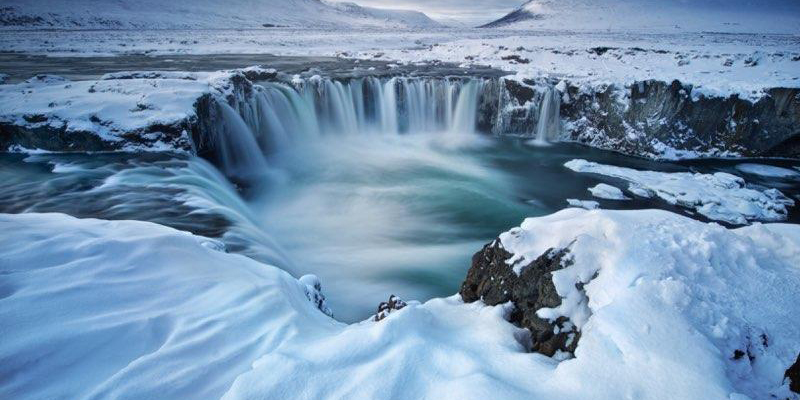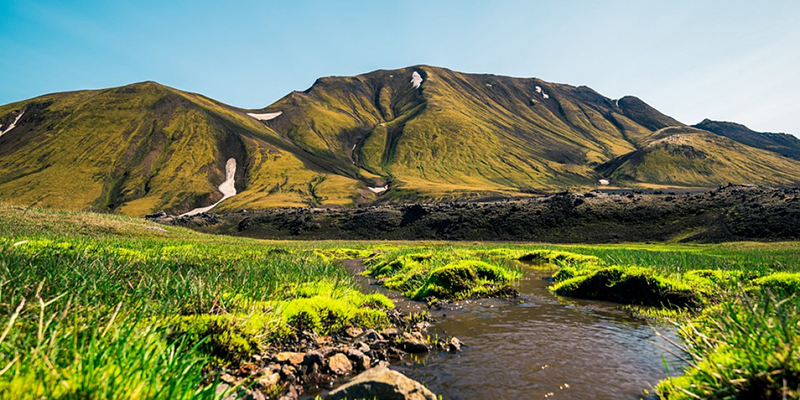When Is The Best Time To Visit Iceland?
Iceland, known as the Land of Fire and Ice, draws countless travelers with its mesmerizing landscapes and dynamic geothermal features. Home to rugged volcanoes, serene glacial lagoons, and soothing hot springs, this enchanting destination offers a one-of-a-kind adventure waiting to be explored. Let’s explore the best times to visit this extraordinary land.

Overview Of Iceland’s Seasons
Iceland is blessed with four distinct seasons, each boasting its unique ambiance that entices visitors year-round.
Winter, spanning from December to February, transforms the island into a picturesque wonderland cloaked in snow. During this time, travelers can marvel at the luminous Northern Lights or partake in adventures like glacial hiking and ice climbing, while cozying up in geothermal spas.
Spring, from March to May, signifies renewal as nature awakens from its icy slumber. Observers can witness blooming wildflowers and the triumphant return of migratory birds, inviting hiking and exploration of vibrant landscapes.
Summer welcomes visitors from June to August with eternal daylight, providing ample opportunity for road trips and memorable excursions like whale watching and cultural festivals set against lush green backdrops.
Lastly, Autumn, occurring from September to November, paints the scenery in a vibrant spectrum of colors. This season presents the chance to partake in harvest festivals and once again catch the mesmerizing Northern Lights as the nights grow longer. Embrace the magnificent diversity of Iceland by choosing the ideal season that aligns with your travel aspirations!
Best Times For Various Activities
Winter Wonders
The winter months of December to February serenely blanket Iceland in white, offering a thrilling range of activities alongside the magical display of the northern lights. Ski enthusiasts can glide down the slopes of resorts such as Bláfjöll, while adventure seekers embark on exhilarating snowmobile tours across snowy expanses. Those brave enough to explore the darker hours can enjoy breathtaking auroras dancing in the sky, making this a truly remarkable time for unforgettable winter adventures.
Spring Awakening
As the frost melts from March to May, spring unveils a vibrant world anew. Wildflowers blanket the landscape, and migratory birds return, including the charming puffins. This season is celebrated by nature lovers eager to explore colorful blooms dotting the terrain. The warmer temperatures and longer days uplift both the environment and the spirits of travelers, inviting exploration of scenic trails and stunning waterfalls that come to life during this rejuvenating period.
Summertime Adventures
Between June and August, Iceland boasts midnight sun that extends the hours of exploration, perfect for taking full advantage of the scenic beauty. Exceptional hiking routes through Þingvellir National Park and the dramatic peaks of Landmannalaugar beckon outdoor enthusiasts. With numerous cultural festivals illuminating towns with food and music, summer is a joyous celebration of Icelandic traditions and natural wonders. Delight in geothermal swimming pools or embark on daring whale-watching adventures—this is a time rich with unforgettable experiences and exploration.
Autumn Beauty
As the calendar turns from September to November, autumn blankets Iceland’s landscapes with stunning hues of gold, red, and orange. This season not only offers breathtaking vistas but also sees the return of the captivating northern lights as evening skies become clear. Hikers can still traverse stunning trails amidst the crisp, invigorating air while also enjoying local food markets and cultural celebrations that highlight the warmth of Iceland’s community during this transformative season.
Peak Tourist Seasons
Summer undeniably represents the peak tourist season in Iceland, captivating visitors with nearly 24 hours of daylight and enchanting scenery. Travelers are drawn to iconic attractions like the Golden Circle, and can enjoy outdoor activities ranging from hiking to marine tours. However, this flourishing season presents challenges, including crowded tourist spots, elevated accommodation rates, and the necessity of making early reservations for popular experiences.

In contrast, the off-peak seasons during late fall and winter provide a refreshing alternative, offering a more intimate exploration of Iceland’s beauty. Sparse crowds at popular sites permit deeper connections to the serene landscape, while vastly reduced travel costs render trips more financially accessible. Notably, winter brings the breathtaking Northern Lights—a spectacle missing in summer.
Ultimately, the choice between peak and off-peak seasons rests on the kinds of experiences travelers prioritize—lively summer adventures or tranquil winter encounters enhanced by significant savings.
Special Events And Festivals
Iceland hosts a variety of vibrant festivals that immerse visitors in its rich cultural landscape. Celebrations like Þorrablót in February honor ancient Norse traditions with unique culinary offerings, while Reykjavik Culture Night in August transforms the city into a hub of artistic expression filled with performances and events. LjóTu55r's 12-Hour Dance, occurring in summer, showcases Icelandic dance and music in an exciting setting. These events provide excellent opportunities for visitors to deepen their connections with Icelandic heritage and craft lasting memories of their travels to this enchanting land.
Weather Considerations
Iceland is notorious for its unpredictable weather patterns, often experiencing rapid fluctuations within a single day. Visitors should remain prepared for an array of environmental conditions—sunshine, rain, wind, and potentially even snow, irrespective of the season. Here are several essential tips to ensure you are adequately outfitted for Iceland’s diverse weather:
• Layering is Key: Invest in high-quality thermal base layers, alongside a waterproof and windproof outer shell and warm mid-layers for optimal adaptability to changing temperatures.
• Accessories Matter: Make sure to bring along warm headgear, gloves, and waterproof boots, as these items are crucial for maintaining warmth and dryness throughout your outdoor escapades.
• Pack Smart: A lightweight umbrella or rain jacket can safeguard your comfort in unexpected rains, and a protective camera case is essential to keep devices dry. Being well-prepared will ensure that you make the most of Iceland’s breathtaking landscapes, whatever the weather holds in store.
Conclusion
The perennial charm of Iceland enchants travelers with its ever-evolving landscapes, rich cultural fabric, and unique, immersive experiences awaiting discovery. Whether you’re captivated by the midnight sun or the magical display of northern lights, the key to an unforgettable journey lies in selecting the timing that aligns perfectly with your personal travel desires. So, get ready to explore and unlock the wonders of Iceland at your leisure!